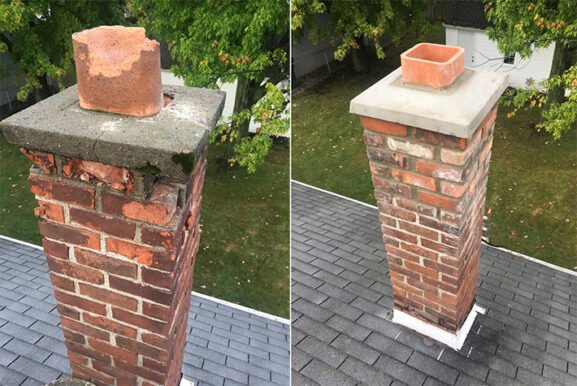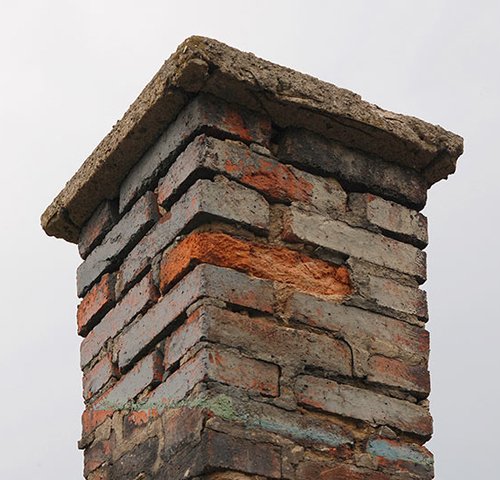Why Homeowners Are Prioritizing Chimney Repair and Restoration in 2025
Key Takeaways
- Chimney repair and restoration help prevent costly structural damage caused by water infiltration and crumbling masonry.
- Regular inspection and upkeep ensure that fireplaces remain safe, functional, and compliant with local fire safety regulations.
- Restoring older chimneys adds long-term value and enhances energy efficiency in both historic and modern homes.
- Timely repair reduces the risk of chimney fires, toxic gas leaks, and major repairs down the line.
The Growing Importance of Chimney Health in Today’s Homes
In many homes, especially those in older neighborhoods or regions with harsh winters like the Northeast, the chimney is both a central architectural feature and a vital part of home ventilation. Yet, despite its role, it’s often overlooked until serious issues arise.
Chimney repair and restoration have become increasingly important as homeowners seek to preserve their property value, boost home safety, and ensure that heating systems run efficiently. Addressing problems early—before they evolve into larger and more expensive structural concerns—can save homeowners thousands.
Understanding the Difference Between Repair and Restoration
Many homeowners confuse chimney repair with restoration, but they address different levels of need.
Chimney repair typically involves fixing isolated issues. This may include sealing cracks in the masonry, repairing damaged flashing, or replacing a faulty chimney cap. These fixes are often quick but essential to maintain function and safety.
On the other hand, chimney restoration is a broader and more involved process. It’s usually necessary for older chimneys or those that have suffered long-term neglect or weather damage. Restoration may include full chimney rebuilds, replacing mortar through tuckpointing, relining the flue, or even restoring historical materials in heritage homes.
Signs That Your Chimney Needs Professional Attention
Homeowners should watch for early warning signs that signal damage or deterioration. These include:
- White staining or efflorescence on the exterior brickwork, which signals moisture intrusion.
- Spalling bricks or crumbling mortar joints, which indicate structural weakening.
- A strong smoky odor indoors, suggesting a draft issue or creosote buildup.
- Water leaks near the fireplace or rusted firebox components, which are signs of moisture entering the system.
Ignoring these symptoms can lead to larger issues such as a collapsing flue, water damage to surrounding walls, or dangerous carbon monoxide leakage. Regular inspection by a certified chimney professional can catch these problems early.
Masonry and Mortar Damage from Weather Exposure
Chimneys face intense wear from rain, snow, ice, and temperature fluctuations. Freeze-thaw cycles are especially harsh on brick and mortar, causing small cracks to expand and break apart over time. In older structures where lime-based mortar was used, decay happens faster without proper maintenance.
Restoring masonry involves careful replacement of deteriorated mortar joints—a process known as tuckpointing. When done correctly, this prevents further water infiltration and strengthens the chimney without the need for a full rebuild. A reputable restoration professional will match new mortar to the original to maintain the home’s aesthetic integrity.
Why Chimney Liners Should Never Be Overlooked
The chimney liner is one of the most important safety features inside a chimney system, yet it’s commonly neglected. It protects the home from high temperatures and toxic gases. If the liner is cracked or missing, dangerous fumes like carbon monoxide can leak into living areas.
Restoring a chimney often includes relining with modern materials like stainless steel or cast-in-place liners. These updates not only improve performance but also meet current building codes, especially in older homes where clay liners have degraded.
According to the Chimney Safety Institute of America (CSIA), relining is required when flue tiles are cracked or missing, and is a crucial step in preventing chimney fires and carbon monoxide exposure (source).
Restoration and Energy Efficiency Go Hand in Hand
A well-maintained chimney contributes to the overall energy efficiency of a home. Damaged chimneys can cause drafts, air leakage, and heat loss. When chimney repairs include sealing leaks and replacing old dampers with top-sealing models, homeowners often notice reduced energy bills.
Older fireplaces especially benefit from modern upgrades like airtight inserts or fireplace doors, which improve heat retention while maintaining a traditional look. These types of restorations can make an aging fireplace more efficient without a full system overhaul.
Preserving the Charm and Function of Historic Homes
Chimneys are prominent architectural features in many historic homes. Over time, weather and neglect can strip away their charm and compromise their safety. Restoration of these structures often goes beyond functionality—it includes preserving original design elements, brick patterns, and construction techniques.
Special care is taken in these cases to use historically appropriate materials and methods. For instance, lime mortar may be used instead of Portland cement to maintain the building’s integrity. While more complex, these projects preserve both the history and the value of the property.
Addressing Chimney Repairs Before They Escalate
Waiting until chimney issues become urgent often results in higher repair costs and more disruption. Cracks, leaks, or damaged liners may not seem urgent initially but can develop into problems requiring partial or full chimney rebuilds if ignored.
Scheduling inspections at least once a year—preferably before the heating season—gives homeowners the advantage of early detection. It also ensures that chimneys are operating safely when fireplaces or wood stoves are in frequent use.
Most chimney professionals recommend chimney sweeping and inspection annually. This is not just a safety precaution but a critical part of preventive home maintenance that can extend the lifespan of both chimney and fireplace systems.
Long-Term Gains from Proper Chimney Maintenance
Investing in chimney repair and restoration isn’t just about avoiding immediate danger or eyeing short-term fixes. It’s a smart strategy for long-term home protection and value retention.
Professionally restored chimneys add to curb appeal, meet insurance safety standards, and reduce energy waste. More importantly, they create peace of mind for homeowners who rely on their fireplaces to provide warmth and comfort during colder months.
By prioritizing chimney health now, homeowners can avoid major issues later—and ensure their homes stay safe, beautiful, and structurally sound for years to come.

